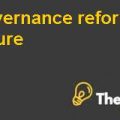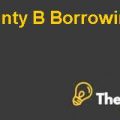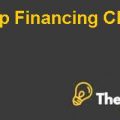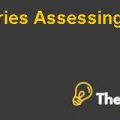
7. How Steria wanted originally to finance the acquisition in the long term (detail the proportion of each product)?
Initially, Steria is considering to finance its acquisition from a new bank facility provided by BNP Paribas. Later on, approximately 50% of which will be financed in the form of bridge financing, which will be repaid from the proceeds of subsequent rights offering.
Steria is considering a right issue totaling of €353 million to partially finance the Xansa’s acquisition.
- 8. How Steria finally financed this acquisition, considering the refinancing occurred in November? Why did they (partially) change their idea about the refinancing of the bridge loan?
Steria finally financed its acquisition through launching convertible bonds of €152 million and right issue of €201 million. Further, the reminder amount has been financed through a bank loan of €307 million.
The organization is considering to change the refinancing of bridge loan because the company suffered a decrease in share price between the announcement of transaction and its refinancing that led the company to increase the capital base
- 9. Generally speaking, do you think that Steria should finance itself with equity or debt? Why?
In order to facilitate better capital structure, the organization shall consider whether it considers to manage its capital structure through debt or equity. Debt financing is a cheapest mode of financing and the interest charged is a deductible tax expense in calculating taxable profits whereas the dividend is not a deductible tax expense in calculating taxable profits.
Steria has a cost of debt of 5% and a ROCE of 13.1% in 2006, so the organization shall consider to finance itself through debt financing because the positive leverage effect will increase the company’s return on equity. Further, the firm and the industry has high economic risk which will restrict banks from granting such huge amount, so Steria shall consider to finance this transaction through equity financing.
Convertible Bond Analysis
- 12. What is the stock price level Steria must reach for considering the conversion convenient? What is the (percentage) premium considering the most recent stock price?
The bond will be redeemed at par value of €37.36, so in order to make the conversion transaction convenient, the stock price of Steria must be high than this amount.
The closing price of the stock is €31.5 and the bond is considering to be redeemed at €37.36, so a premium of 18.6% will be required in order to consider the conversion convenient. Further, the premium does not seems to be excessive high due to high cost of equity,high volatility of stock and high tenure of conversion period.
- 13. What are the characteristics that the convertible bond has that makes it an equity-like financial instrument?
- The bonds are perpetual securities, subject to early redemption at the option of the company.
- In the case of liquidation, the interest and principal amount of bond holders will be paid after other senior debts had been paid-off.
- Bond is accounted as equity under IFRS.
14. What are the characteristics that the convertible bond has that makes it a debt-like financial instrument?
- The bond carries a fixed interest of 5.7% for a period of 5 years.
- In the liquidation, bond holders are paid after other creditors had been paid but before the reimbursement of equity holders.
- In the event of change of control of Steria, the bond will bear an interest rate of 10.70%.
- If the bonds are not converted into shares or not reimbursed till January 1, 2013, then the bonds will bear a periodic 3 months Euribor + 8%.
15. Based on a EURIBOR of 4.72%, the interest rate of the convertible after 2013 would increase to 12.72%. How would you characterize that rate? What could be an intelligent financial decision of the company after 2013?
The bond will bear an interest of 3 months Euribor + 8% from 1st January 2013 and the cost of convertible bonds will become prohibited after 2013, so it will be better for the company to pay back or refinance the bond in order to avoid substantial financial cost.
- 16. Is the accounting treatment suggested by the company justified (see the November press release)?
The press release in 13 November 2013 confirms that the convertible bond will be accounted as equity under IFRS, which does not seem reasonable because the repayment of debt is highly probable, so
it should be considered as debt. Further, the organization can adopt a practice to recognize the amortized amount of principal and interest as debt with the remaining residual amount as equity...................................
This is just a sample partial case solution. Please place the order on the website to order your own originally done case solution.













